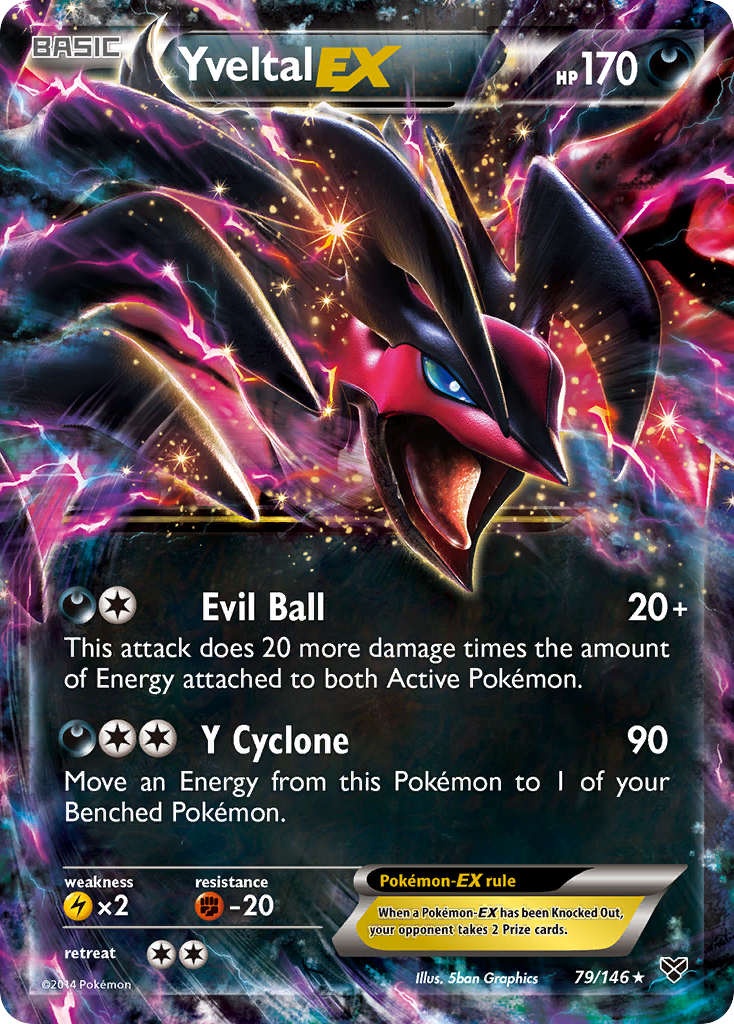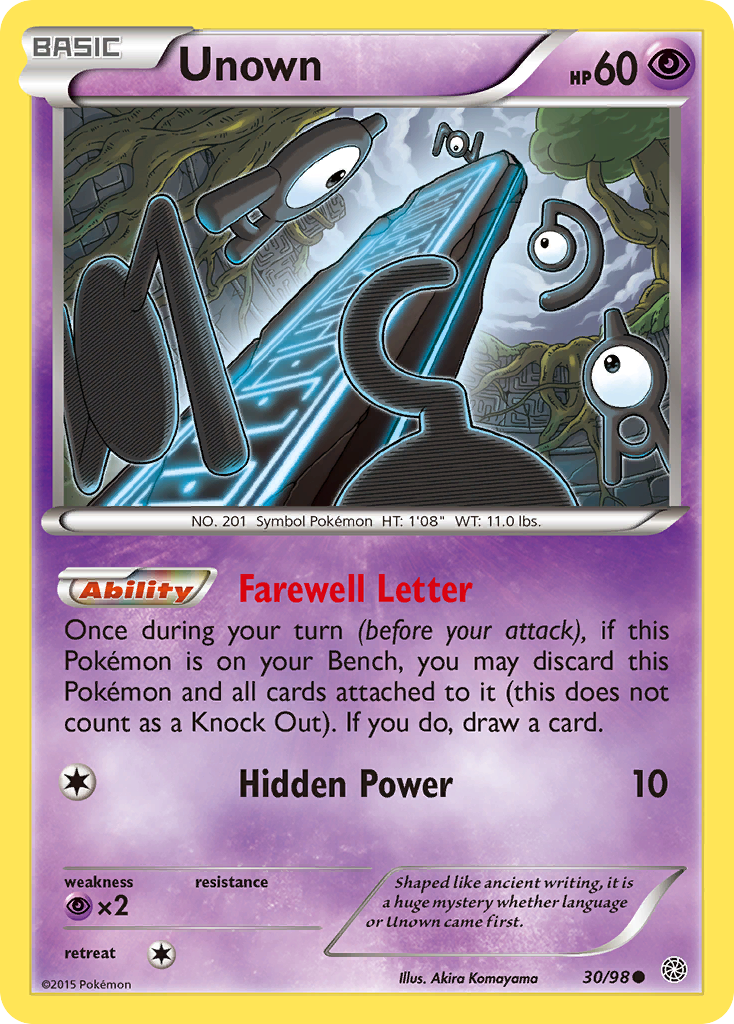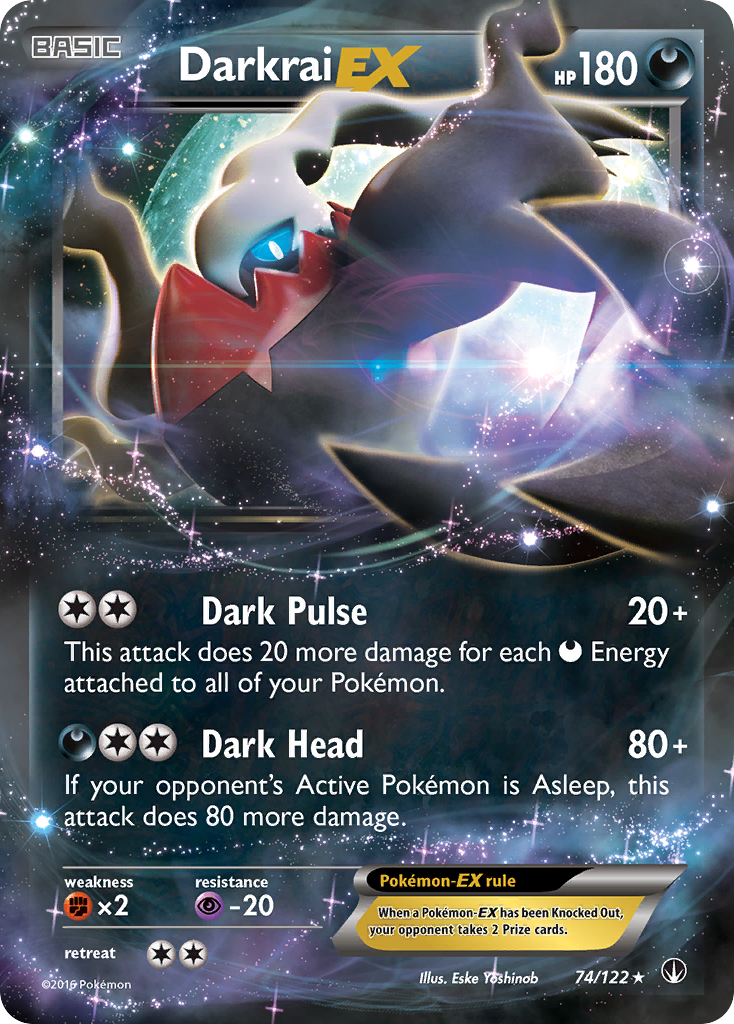Versatility — Adapting Your Decks Based Off Expected Metagames
Hey guys, it's Treynor again with another article. I've been playtesting a bunch of Standard for my local League Cups, and some thoughts occurred to me while I was practicing, playtesting, and pondering the state of Standard right now. I've been fairly critical of the rock-paper-scissors-ness of Standard since the rotation. In addition to that, I've been critical of the lack of good consistency cards in the Standard format. Shaymin-EX is a staple in almost every deck, however, dead draws still happen often and are the leading cause of frustration amongst players.
So I got the idea to prioritize testing of decks that are very versatile. What do I mean by "versatile" though? I use the term to describe decks that can shift easily by changing a card or two, or decks that gain or lose disadvantages by changing a single card. There's also value to decks that are solid with their own game plan (decks that win if they stay consistent). I've thought about decks players in my area play and ways to beat them. I hate doing that, since I generally like playing decks that are fun and have good fundamentals (mainly Yveltal-EX decks), however, League Cups are so small and localized, that you almost have to metagame to a degree.
On the flip side, Regionals are so big, it's almost impossible to metagame. Yes, you can predict what may be popular, but there are so many rounds and so many different skill levels and knowledge levels amongst the players at such a large tournament, that you never know what you're going to face. Almost every Regionals I've been to, I don't see the same deck more than two or three times in a nine-round tournament. If you make day two, you face even more decks that are different than what you've faced before.
League Cups are a different animal altogether. They're small, and they force you to think about what the good players in your area are playing and what you can do to play against those decks. If you've got a 20+ person League Cup, chances are you will cross paths with players that you know and can predict their plays. But you also have to beat the weird decks that you are going to face. The decks that you didn't even know existed, piloted by more casual players. Most League Cups are best of one as well, so that's something else you have to consider.
So we need a deck that we can easily mutate and adapt, possibly the day of the tournament, without changing the fundamentals of the deck. It also needs to be fairly consistent to survive the best of one format. Or we need a deck that has a solid game plan that has solid matchups against nearly everything, and has that same consistency to it.
The Analogy
I can be stereotypical and break down the whole Swiss Army knife thing, but what I've been pondering is how you can liken decks to the F-18 Fighter Jet. You don't need to know about this particular jet. Not everyone comes from a military background, but hear me out, you can liken decks to this fighter. I won't go into the weeds of this thing. I know you're all here to better yourselves as Pokemon players.
The F-18
The F-18 Hornet is a twin engine craft that the United States Navy employs. It's deployable off of aircraft carriers, and there are multiple weapon loadouts and variants of this fighter that serve different roles. This fighter was designed to have different weapon systems on it to change its battlefield role entirely. Here's a few of those:
- Fighter Aircraft - The F-18 Hornet can engage other aircraft and defend airspace
- Attack Aircraft - The F-18 Hornet has the capability of being loaded with bombs to provide air support for ground troops
- Electronic Warfare Aircraft - The F-18 Hornet has a variant that can be loaded out to jam enemy radar
In addition to these roles it can fulfill, it also has these features.
- High thrust to air ratio, giving it excellent aerodynamic features
- Carrier-based, so is easily deployable
Now being multirole can be a feature in itself, but for the sake of explaining things, I will split the two and explain each part separately.
So now you might be already applying the whole role to feature idea to Pokemon decks. These are ways that I think about decks and what they counter.
The Good and Bad Matchup Approach
I know some players that will literally write down a list of all the decks, their good matchups and their bad ones. I've seen all sorts of ways that players enact this in some way or another. I'm not a fan of this as there are some flaws with this approach.
The Assumption that Matchups are Black and White
So what does that mean? Well, Pokemon players argue matchups more than anything. Sure, Greninja beats Volcanion-EX and M Gardevoir-EX loses to M Scizor-EX. That's easy. However, depending on who you talk to, matchups aren't so easy to say that X beats Y. Your own personal testing is the best way to prove these matchups as 50-50s or as lopsided matchups. Sometimes your testing is flawed. (What is the skill level of your testing partners? Are their decks well built? Do you test as often?)
Word of mouth from others that have tested their matchups well is one of the best approaches on getting ideas on what matchups are good and bad for a particular deck. However, you almost never find a consensus for some of those grey area matchups.
Ignoring Fundamentals
You hear me write about deck fundamentals a lot. Decks are "fundamentally sound" I say a lot. What that means is, what is your deck's gameplan? Does it slowly build up damage over time? Does it hit hard early but lose its attackers a lot? Is it slow but have a dominating late game? This is incredibly important, since it doesn't only dictate matchups, but it also dictates how well your deck is going to perform. That slow dominating deck did way better with the card pool of Worlds 2011 versus the Night March format of 2016. These deck fundamentals also are different based on the decks you like to play. Believe it or not, players tend to gravitate towards different decks. You can use this idea to help metagame your area as well.
It's Just Complicated
Building a web of good and bad matchups has always given me a headache. Same with looking at another player's chart / web / hieroglyphics that they use to map a format. It doesn't work for me and it might not work for you. I'm not a "metagamey" player; however, I don't ignore or neglect that idea that you can roll into a tournament that is full of decks that can steamroll you.
A Note On Deck Choice and Scouting
I'm going to go into detail about how little things you can do to a deck can make it function better against a particular metagame. Now, there's no use making M Scizor-EX work against a big Volcanion-EX metagame. So a note needs to be made here about making a good deck choice as well. You can't out-tech every bad matchup. The decks in the second half of this article are decks that shouldn't lose to many decks, but they still have hard counters. Standard is full of hard counters and it's not something you can do a whole lot about. It's simply how Weakness works in the game right now.
Vespiquen has an advantage in that it doesn't care too much about its own Weakness. It expects to get Knocked Out every turn anyway. However, if everyone is fitting in Zebstrika and you know it, don't try to make Yveltal-EX work. Play Turbo Darkrai-EX instead or M Mewtwo-EX. Your F-18 can do a lot of things, but it isn't going to able to fly underwater. Use the multirole capability of your deck to augment or supplement matchups. You can't get rid of bad ones altogether.
Scouting is also important here as well. You can predict what your friends are playing, but sometimes players are good at keeping their decks hidden. So you have to scout / predict to the best of your ability and take a shot in the dark with how you're going to configure your deck. A big part of why I like the multirole decks, is that they don't lose sight of what makes the deck great. It doesn't lose its features no matter what role you want your deck to cover.
So in essence, predict and build, but don't be surprised that your deck may not be teched against your opponents properly on game day.
Now that I've got that note out of the way, let's begin.
Multirole Decks
Let's apply our analogy earlier and break down some popular decks that I consider multirole. To reiterate, these are decks that are solid in their own right, but given a card or two, their matchups against particular decks can drastically change. We can add these cards on the spot right before the tournament, given what we can glean from what we see other players playing or from word of mouth.
Turbo Darkrai
This is my second favorite example. The reason why I started with this one is because it has been what I've been testing extensively. Let's go over some of the roles that it can perform.
- Prize denial (removing cheap Prizes off the Bench)
- Strong potential Ability-lock
- Special Energy removal
So essentially, you can see roles as ways your deck can beat specific decks. Now let's break down the features.
- Energy conservation (Exp. Share)
- Solid single Prize attackers (Yveltal)
- Steady damage ramp
- Solid recovery options
- Easy Ninja Boy / Tauros-GX combination integration
- Psychic Resistance
- Late game OHKO potential
So we can see features as what makes a deck good in general.
So what can we add to our deck that will make Turbo Darkrai-EX serve its roles well while not touching the core of the deck? You've probably heard about a "skeleton" deck list before. A "skeleton" list is one where you have a core with some flex spots where you can add techs or more consistency cards. Let's discuss these flex spots.
Prize Denial
Parallel City and not needing to rely on Shaymin-EX is the best way we can serve this role. This deck plays the typical two Shaymin-EX allotment; however, we can play two copies of Parallel City in the deck to make sure these Shaymin-EX don't stay on the Bench for long. This deck also plays Hoopa-EX, which is an awful Bench sitter. Most of these decks have three Stadium slots. These can either be Parallel City, Silent Lab, or Reverse Valley. By incorporating more Parallel City, we remove these cheap Prizes from decks such as Vespiquen and Passimian.
Strong Potential Ability-lock
I add potential in this role. It's not a solid Ability-lock, such as with Garbodor decks, however, we can incorporate a second copy of Hex Maniac and play two Silent Lab in the deck. Turbo Darkrai-EX has such a benefit in that it only needs to attach an Energy every turn to keep its game plan going. If you can attach an Energy without a Supporter, you can play these awesome tech Supporters such as Hex Maniac. You can essentially keep a permanent Ability-lock going this way with smart Silent Lab and Hex Maniac plays.
Special Energy Removal
Adding two copies of Enhanced Hammer to this deck is dirty in metas that have a heavy M Mewtwo-EX and Yveltal-EX presence. These decks take OHKOs like crazy if you allow them to set up multiple Double Colorless Energy on a single attacker. I almost always get beat by Yveltal-EX in testing if they get multiple Yveltal-EX going with four Energy or so on them. If you can remove said Energy, you can almost ensure you will not get OHKOd, while your damage slowly ramps up with Energy attachments and Max Elixir plays.
These are merely some of the roles that this deck can fulfill. These are the roles that I tested. I'm sure you can read some of the cards in Turbo Darkrai-EX and get a good idea of what the deck strategy is. Exp. Share is so powerful in the deck. Your own Pokemon getting Knocked Out won't necessarily ruin your damage output over the course of the game. Yveltal seamlessly integrating with this deck's strategy is also a huge plus. Recovery is excellent with this deck too since you will always have multiple attackers on the Bench with multiple Energy.
I mention the Ninja Boy and Tauros-GX combo because it is significant. Eric Gansman goes over it in his latest article on Yveltal-EX decks. This combination is insane when you pair it with Yveltal in this deck. A small setup attacker immediately becomes an attacker that will take a OHKO. That's a huge feature in this deck. Sure, it doesn't play Double Colorless Energy, but attaching two Energy to an attacker is so trivial in this deck with all the Energy ramp it has.
Psychic Resistance is crucial as well. This vastly improves your M Mewtwo-EX and M Gardevoir-EX matchups and will help prevent these decks from OHKOing you.
Last but not least, this deck hits 180+ easily late in the game. Hitting those numbers almost makes adding Rattata to the deck to counter Fighting Fury Belt, but I haven't tested this and I don't think it fits in well with the deck compared to the other options that I will discuss later.
This concludes the public portion of this article.
If you'd like to continue reading, consider purchasing a PokeBeach premium membership! If you're not completely satisfied with your membership, you can request a full refund within 30 days.
Each week we post high-quality content from some of the game's top players. Our article program isn't a corporate operation, advertising front, or for-profit business. We set our prices so that we can pay the game's top players to write the best content for our subscribers. Each article topic is carefully selected, goes through multiple drafts, and is touched up by our editors. We take great pride in our program!





